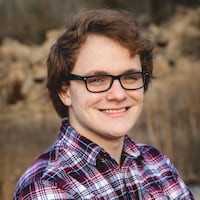From 2 to 4 p.m., Former Chief Technology Officer of the US Air Force Research Lab Brian Kent, an avid photographer, will discuss the mechanics of an eclipse, using illustrations to help the audience to visualize. Kent will also share his personal collection of photographs he took in Idaho during the 2017 solar eclipse, along with photographs from Washington Twp. during the 2019 lunar eclipse.
He will teach guests the proper and safe way to photograph and view the upcoming solar eclipse.
Safety is key during all eclipses, and total solar eclipses are no different. NASA says there are several rules to follow, with the man one being to wear eye protection while any part of the sun is showing; sunglasses will not do. Special eclipse glasses block out the incredibly intense rays of an eclipse.
While wearing the glasses, do not look at the sun through any cameras, lenses or any other optical devices. As NASA states, “the concentrated solar rays will burn through the filter and cause serious eye injury.”
The only exception to this rule are optical devices with special filters placed on them to block out the rays. However, experts should always be sought out before using any such filters, as they have to have certain qualities to be safe.
When using a device with an appropriate filter, regular eclipse glasses do not need to be worn.
When the sun is completely blocked out by the moon, and no part of the star is showing, it is only then safe to look at the eclipse with no protection. You will know when the time is right, as the sun will not appear in the eclipse glasses.
Once this moment is over, immediately refer back to the previous safety protocols.
The library event will also be offering free eclipse glasses for visitors, to help make sure as many people can view the eclipse in a safe manner. This event is for those 18 and older, and anyone interested can register for the event online. If a guest needs to cancel, the library requests 24 hours notice. If this is not provided repeatedly, the guest in question will be suspended from library events for two months.
How to go
What: Solar Eclipse Photography, Merging Science and Art
When: 2 to 4 p.m. Tuesday, Feb. 6
Location: 6060 Far Hills Ave., Centerville
More info: (937) 433-8091 ext. 2 or www.wclibrary.info. People who wish to attend must register online.
Where to see the eclipse
Timing: The Total Solar Eclipse in Southwest Ohio will be between 3:08-3:17 p.m. with the Southwestern parts of Ohio being first and the Cleveland area being the last as it moves toward Canada. The centerline of the eclipse enters Ohio just after 1:50 p.m.
Locations: According to the Ohio Dept. of Natural Resources and NASA, the path of totality, or the most central Southwest Ohio spots to see the total solar eclipse include Darke, Shelby and Auglaize counties. Close to that center, though, are the counties of Montgomery, Miami, Champaign and Preble. The outer edges of the path, where partial darkness will be seen, includes the northwestern portions of Butler and Greene counties. Warren and Hamilton will experience some darkness but are on the edge of the path.
Of note: The Total Solar Eclipse band is 124 miles wide. According to ODNR, “The last total solar eclipse visible in Ohio was in 1806. The next total solar eclipse in Ohio will be in the year 2099.”
Source: https://ohiodnr.gov/go-and-do/see-the-sights/solar-eclipse-2024
About the Author



